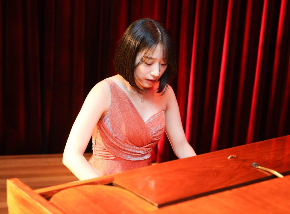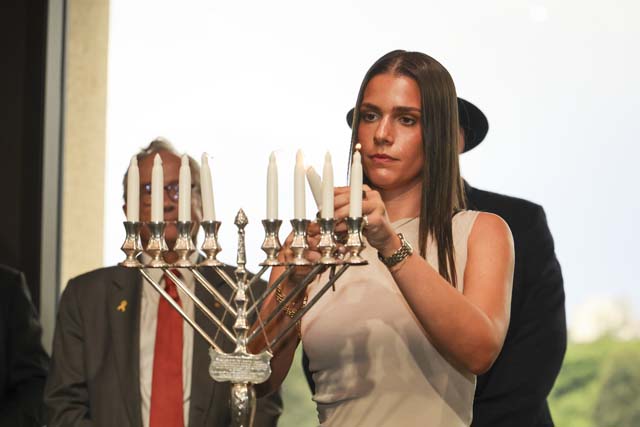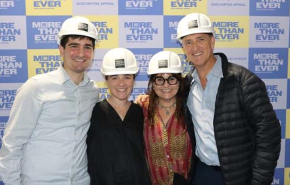From Australia’s Jewish Past
Lillian Roxon – foreign correspondent rock journalist and author – best known for the first Rock Encyclopaedia

Lillian Roxon
Lilian was born on 8 February 1932 in Italy. Her family was originally from Ukraine, moving on to Poland and then to Alassio Italy.
In 1937 the family emigrated to Australia to escape the rise of fascism and settled in Brisbane. They anglicised their names from Ropschitz to Roxon shortly after arriving in Brisbane.
Lillian studied at the University of Queensland and the University of Sydney, where she fell in with the cultural movement known as the Sydney Push, then congregating at the Lincoln Inn in Woolloomooloo. Lillian attracted the attention of an ASIO operative and was “reported on 25 June 1951 as a communist sympathiser”. Her career in the newspaper world began in Sydney with the tabloid magazine Weekend, owned by newspaper magnate Sir Frank Packer and edited by journalist and author Donald Horne.
During her studies in Brisbane, she met and had a brief affair with Zell Rabin who later became Mirror’s bureau chief in New York. Zell was another brilliant, charismatic young journalist from a Jewish emigrant family, and it was he who gave Lillian her first job in New York with the Mirror in the early 1950s. Her role at the paper led her to be a key associate of media magnate Rupert Murdoch.
In 1959 she moved permanently to New York, becoming the first Australian female overseas correspondent and the first Australian journalist to establish a high profile in the United States. From 1962 onwards, she was the New York correspondent for The Sydney Morning Herald and, over the next ten years she established her career reporting on arts, entertainment, and women’s issues for the Australian, American, and British press.
In the mid-1960s Lillian became fascinated by pop music and the rise of groups like The Beatles, The Byrds, and The Rolling Stones and started writing regular articles on the subject. She attended a press conference in New York in 1966 with Brian Epstein manager of The Beetles, where she found the questions were quite dull. Out of the blue came one question from a small, blond woman named, Lillian, which shook the event. “Mr Epstein, are you a millionaire?”. There was no response to this.
In early 1967 she visited San Francisco and was one of the first mainstream journalists to write about the developing hippie movement, filing a landmark story for The Sydney Morning Herald. She contributed to Oz Magazine and the short-lived Eye Magazine published in the late 1960s. During this time and into the early 1970s, she had built an amazing network of close friends including critic and rock manager Danny Fields of Village Voice, an American news and culture publication based in Greenwich Village, New York City, together with journalists, musicians, writers, and photographers including Linda Eastman and Australian academic, author and feminist Germaine Greer. Lillian recognised that rock was about to become big and transform almost every aspect of popular culture.
In 1965, she was joined by The Sydney Morning Herald’s autocratic foreign correspondent Margaret Jones. Lillian’s biographer Robert Milliken writes it was a clash of two unbending personalities “like two sopranos sharing the same stage”. Perhaps to keep these two apart, Margaret was posted to Washington the following year.
Lillian hosted many Australians who visited the city, including The Easybeats, singer Lynne Randell, and artist Clifton Pugh. Australian singer Helen Reddy credited Lillian for her first awareness of the women’s movement and for providing much of the impetus for co-writing her international hit, “I Am Woman“. Linda Eastman, who later became Linda McCartney, was one of Lillian’s closest female friends, and she did much to further Linda’s career, but the friendship ended abruptly in 1969 when Linda moved to London, married Paul McCartney, and cut all ties with her former friends, a move which deeply saddened Lillian.
Between 1968 and 1969, Lillian was commissioned to write what became the world’s first rock encyclopaedia, published by Grosset & Dunlap in late 1969, and the work for which she is best remembered. By the 1970s Lillian’s profile had expanded and became more widely known for her feminist stance. She wrote a groundbreaking and highly personal report about the August 1970 women’s rights march in New York, published in The Sydney Morning Herald under the title “There is a Tide in the Affairs of Women’’. She wrote a regular column on sex and sexuality for Mademoiselle Magazine (which continued after her death). Lillian’s friendship with her fellow Australian Germaine Greer was equally turbulent. Before Germaine became famous Lillian introduced her to Max’s Kansas City – a New York nightclub. Their relationship became something of a rivalry. However, Germaine still listed Lillian as the first of four women to whom she dedicated “The Female Eunuch”, her 1970 book that remains a feminist bible.
Unfortunately, Lillian’s health declined during the early 1970s and her last visit to Australia was in early 1973. While in Sydney in February, she was interviewed by ABC journalists Jeune Pritchard and Gary Hyde for ABC’s pop magazine program GTK– an Australian popular music television series of ten-minute episodes relating to genre, music, and the arts produced for television from 1969 to 1975. The shorter interview with Jeune Pritchard was included in a special on the Australasian tour with The Rolling Stones, who toured in 1973. It was evident at this interview that Lillian did not look well. In the longer interview with Gary Hyde, Lillian was questioned about the current state of rock music and up-and-coming stars. She responded with The New York Dolls, an American rock band of the 1970s, and the then-unknown Bette Midler.
Once back in the US, Lillian’s health declined further. She developed asthma and gained a great deal of weight due to the cortisone medications that she had been prescribed. As a result, her writing and interviews became less. Her print articles were confined to landmark New York concerts. She had written a novel, loosely based on her years in Sydney, which was never published. This manuscript now resides in the State Library of New South Wales, along with her large collection of letters and other papers, donated by her family and her close friend, the film producer, Margaret Fink, noted for her important role in the revival of Australian cinema in the early 1970s.
Lillian died at the age of 41 on 10 August 1973, after suffering a severe asthma attack in her New York apartment. She was survived by two brothers Jack and Milo. Both parents predeceased her and she never married or had children. Her niece Nicola Roxon served as the Attorney-General of Australia from 2012 to 2013 and her most recent appointment is that of Chair of the Australian Institute of Health and Welfare. The Canberra suburb of Gilmore names streets after journalists of note and, in memory of Lillian and her achievements, Roxan Place is named in her honour. She was also inducted into the Australian Media Hall of Fame.
Helen Reddy farewelled Lillian with a letter published in the Australian Women’s Day: “Your peers were the most witty and intelligent of their generation. You saw a new art form arise and sail at its masthead. New York City has lost one of its legends, and I don’t want to walk into Max’s Kansas City without seeing you holding court or having you clutch my hand and say ’Darling, you must meet a fabulous person’.
The AJHS acknowledges the following references in the preparation of this story:
Australian Dictionary of Biography – Robert Milliken; Wikipedia; The Australian Media Hall of Fame; Mother of Rock by Robert Milliken; The Sydney Morning Herald 1962 – 1973, New York Times 1973

The Australian Jewish Historical Society is the keeper of archives from the arrival of the First Fleet in 1788 right up to today. Whether you are searching for an academic resource, an event, a picture or an article, AJHS can help you find that piece of historical material. The AJHS welcomes your contributions to the archives. If you are a descendant of someone of interest with a story to tell, or you have memorabilia that might be of significance for the archives, please make contact via www.ajhs.com.au or [email protected].









